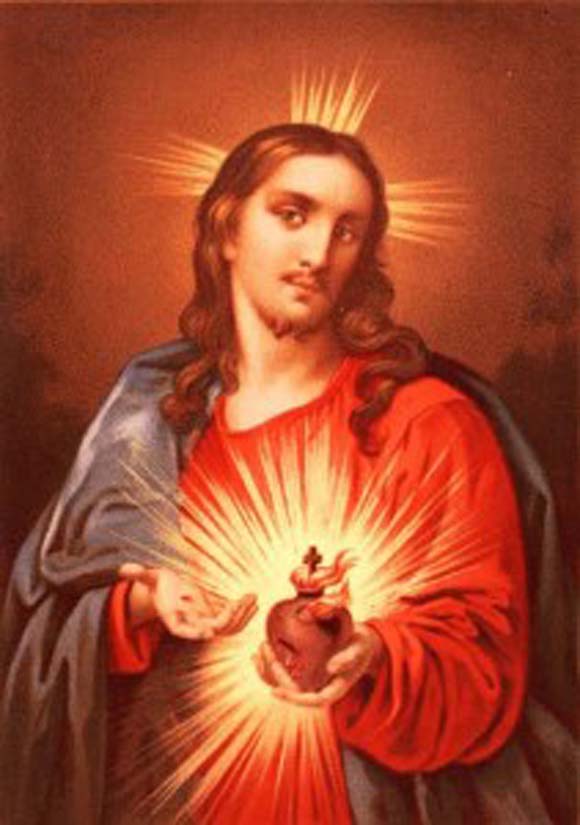
The Most Sacred Heart of Jesus
1.5k
 I have never really supported the 19th century representation of the Most Sacred Heart of Jesus, standing with a open wound in his chest, where his heart is visible, or even with his heart removed from the body, maybe held in his own hand. It is not that I haven’t got the point – Christ offering his heart by love towards humanity – but I can’t help seeing it as a violation of the body, a disturbing image that removes me from the meditation on love. But popular devotions find their expression according to their own time and place, and one may ask how our time would like to represent this devotion today. Historically, the devotion to the Most Sacred Heart spread rapidly from the 17th century, but can be traced back to Benedictine and Cistercian monasteries in the 11th and 12th century.
I have never really supported the 19th century representation of the Most Sacred Heart of Jesus, standing with a open wound in his chest, where his heart is visible, or even with his heart removed from the body, maybe held in his own hand. It is not that I haven’t got the point – Christ offering his heart by love towards humanity – but I can’t help seeing it as a violation of the body, a disturbing image that removes me from the meditation on love. But popular devotions find their expression according to their own time and place, and one may ask how our time would like to represent this devotion today. Historically, the devotion to the Most Sacred Heart spread rapidly from the 17th century, but can be traced back to Benedictine and Cistercian monasteries in the 11th and 12th century.Apart from the representation mentioned above, the devotion to the Sacred Heart has an intimate beauty, a deep meditation on the self-giving of Christ, given to humanity so that we may follow in his foot-steps. As Christ empties himself through his all-embracing love, so are we called to give ourselves, both in prayer and in charity towards our neighbour. The devotion is deeply connected to the Eucharist, and as the heart, often connected to love and goodness, the deep centre of our existence, so is the Eucharist the place where grace and love are transmitted to believing humanity. The heart also signifies trust and openness, values that John Henry Newman must have thought of when he was elected Cardinal, citing St Augustine as he chose the motto Cor ad cor loquitur, Heart speaks unto heart. For this is the profound mystery of the Incarnation. God unites with humanity, and comes so close to us that he reaches us from within, from one heart to another.
We may not always be aware of it, but this intimacy is present also in the Old Testament. The relation between Israel and the Lord carries within it a paradox. The people of God address themselves to the Lord whose name they cannot even mention. Still, the Psalms expresses all the dimensions of human life, from celebration, joy, peace, happiness, to frustration, sorrow, anger and despair; all through it is a most intimate language, seen in the word ‘You’. Whether it is in anxiety – My God, my God, why have you forsaken me (Ps 21,1) – or in thanksgiving – You make your saving help my shield,and your right hand sustains me; your help has made me great’(Ps. 18,36) – we always find the deep trustful way of talking with God expressed through an unreserved ’You’.
This intimate dialogue is ultimately revealed in the Incarnation, but we shall not forget that the people of the old covenant are living in God’s immediate presence. As we meditate on the gift of receiving the heart of Christ in our own lives, we may cite an old rabbinic prayer that expresses the infinite communion between God and man, between the Lord and his people:
“Where I wander –You!
Where I ponder –You!
Only You, You again, always You!
You! You! You!
When I am gladdened –You!
When I am saddened –You!
Only You, You again, always You!
You! You! You!
Sky is You! Earth is You!
You above! You below!
In every trend, at every end,
Only You, You again, always You!You! You! You!”


